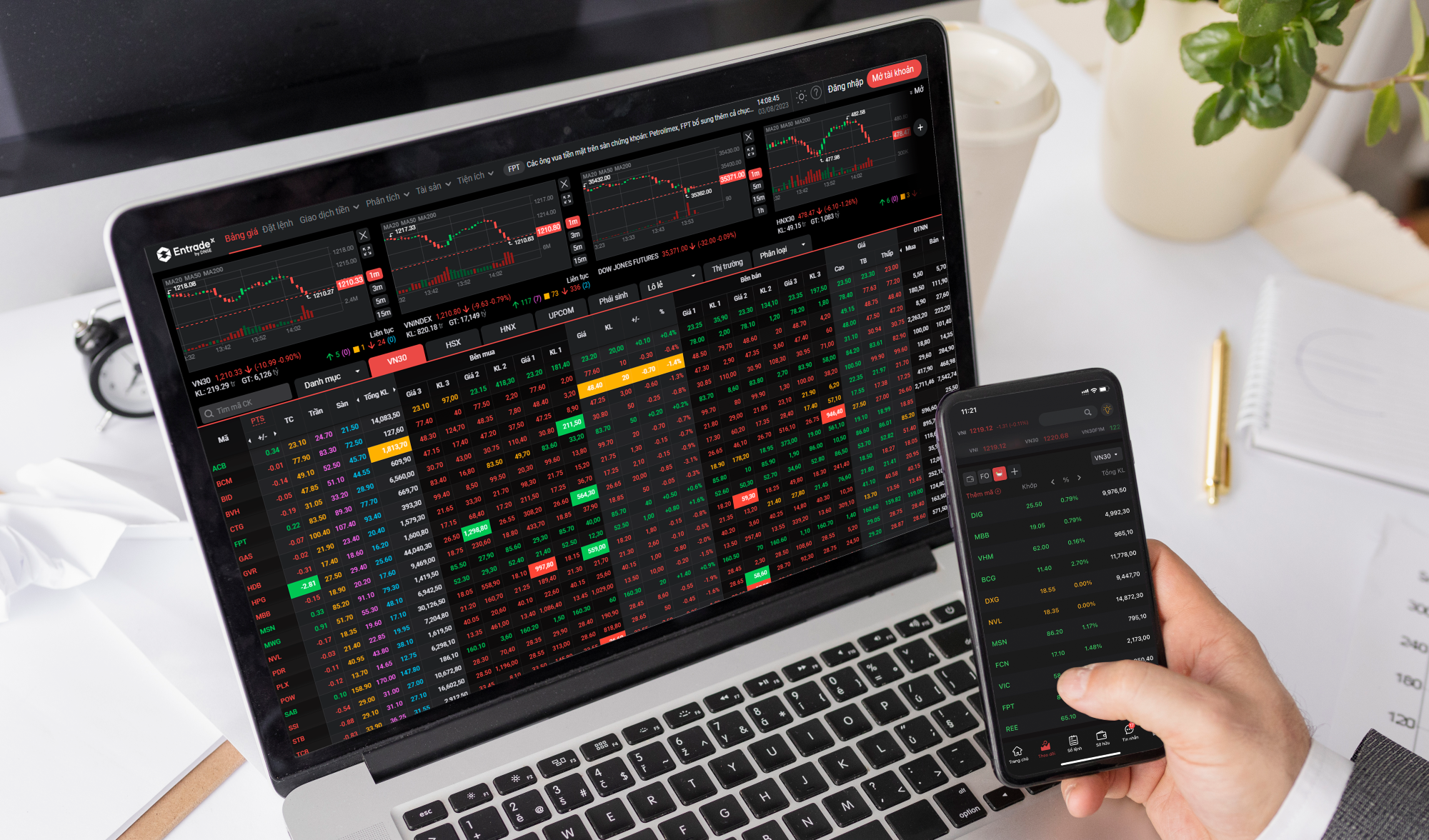For beginners, the stock market can feel like a maze. However, following the IBD method from Investor's Business Daily, the financial newspaper founded by investment legend William J. O'Neil, focusing on three core elements can help investors identify promising stocks, optimal entry points, and effective exit strategies.
Managing risk by understanding market trends
IBD points out that roughly 75% of stocks move with the market index. This means when the market rises, most stocks rise, and vice versa. Therefore, the first principle is to buy only when the market is trending upwards and to switch to a defensive strategy when there are signs of weakness.
The IBD method developed by William J. O'Neil uses a market tracking system with 5 levels of recommended stock allocation, from 0-20% (high-risk period) to 80-100% (strong trend), based on technical and sentiment indicators like the number of stocks breaking through price ceilings and trading volume around moving averages.
 |
Understanding market trends is crucial for investing. Photo: DNSE |
Focusing on stocks with significant profit growth
IBD encourages focusing on stocks with strong earnings growth, especially companies with new products, market expansion, new leadership, or recent IPOs. Companies like Apple, Amazon, and Nvidia have seen substantial price increases thanks to outstanding EPS and revenue.
When searching for potential stocks, investors can use stock screening tools based on the IBD method, such as growth rankings, EPS indicators, SMR, or automated filters.
In the Vietnamese market, studies applying value investing theories from Graham, Fisher, or Fama-French also identify intrinsic qualities like profit, cash flow, ROE, and growth rate as key factors determining stock returns.
Tracking institutional investor activity
The third foundational element is monitoring the flow of funds from institutional investors like investment funds, pension funds, banks, or large asset management companies. These institutions account for a significant portion of market trading volume and can considerably impact stock price trends. Therefore, understanding which stocks they are buying or selling is crucial data.
Additionally, technical methods like chart analysis around moving averages (50 and 200 days) can help investors make more objective judgments instead of relying on circulating news.
 |
DNSE provides investment ideas through indicator filters and 4 thorough filters. Photo: DNSE |
According to DNSE experts, many individual investors in Vietnam are often influenced by herd mentality, overconfidence, or unrealistic expectations, leading to flawed investment decisions and low returns. Vo Van Huy, an investment consultant at DNSE, suggests that to maintain a clear perspective, investors need to view money not just as numbers but also as a psychological factor.
"Consider money as a tool, a means to achieve life goals. When you understand what is enough and avoid comparing yourself to others, you'll limit many subjective mistakes," Huy emphasized.
To support investors, securities companies now offer many advanced tools to help them keep up with market trends, quickly grasp information, and make investment decisions. For example, DNSE, a pioneer in technology-driven solutions, offers many innovative features that aid in market tracking and investment recommendations.
Specifically, the virtual stock assistant Ensa helps track market developments, update news, and provide timely alerts; the Senses and Trading Ideas tools offer comprehensive data, filtering out potential growth companies; while technical charts and real-time trading data allow observation of large cash flows—a factor clearly reflecting the buying and selling trends of institutional investors.
DNSE also adds policies like free transactions, flexible margin packages, and transaction-based margin management and lending, ensuring transparency and optimizing the experience, thereby helping investors build safer and more sustainable strategies.
Anh Vu












